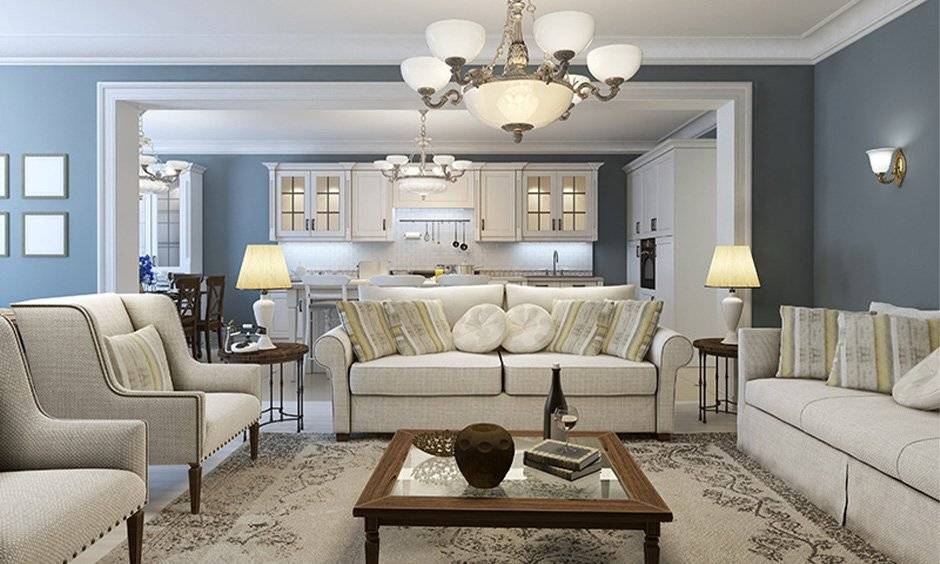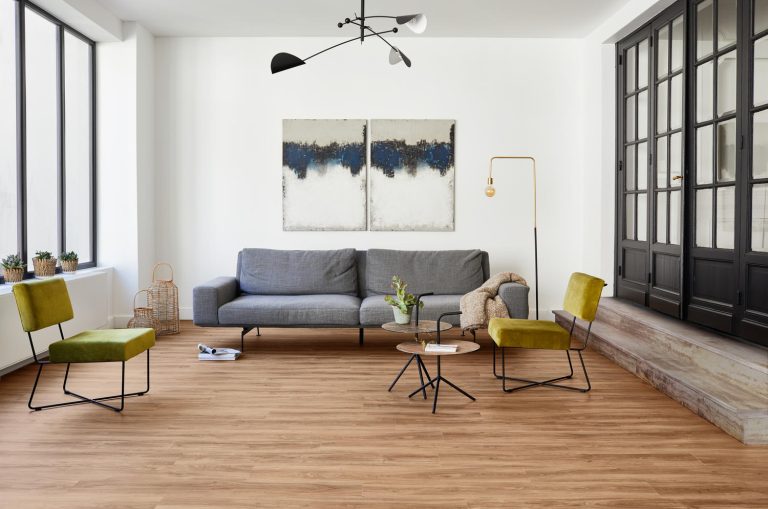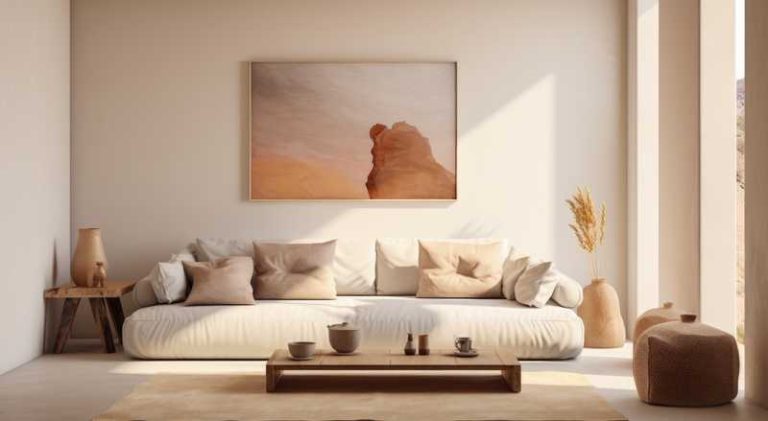
When it comes to transforming a space, few elements have as much power to influence the mood, ambiance, and overall aesthetic as color and theme. These two fundamental aspects of home decor can shape how we feel in a room, how we interact with the space, and even how others perceive our home. Whether you are embarking on a complete home renovation or simply updating a room, incorporating the right colors and a cohesive theme can breathe new life into your surroundings. In this article, we’ll explore how to strategically use color and theme to improve your home, turning it into a harmonious, welcoming, and visually stunning environment.
The Influence of Color on Home Atmosphere
Color is more than just an aesthetic choice—it profoundly affects our emotions, energy levels, and perceptions of space. The hues you choose for your home have the power to evoke feelings of tranquility, excitement, warmth, or even creativity. Understanding the psychology of color can help you make informed decisions about which shades to incorporate into your home.
-
Calming and Soothing Colors: If your goal is to create a peaceful retreat, soft blues, muted greens, and gentle neutrals like beige or grey are excellent choices. These colors promote relaxation and are often associated with nature, making them perfect for spaces where you want to unwind, such as bedrooms and living rooms. Light blue, for instance, is known for its calming effects, making it ideal for reducing stress and anxiety. Similarly, soft greens, reminiscent of lush landscapes, can bring a refreshing and rejuvenating quality to your space.
-
Energizing and Invigorating Colors: On the flip side, if you want to create a lively atmosphere, bold and vibrant colors such as red, yellow, and orange can stimulate energy and creativity. These colors are perfect for spaces that are designed for socializing, such as kitchens or entertainment areas, where you want to encourage interaction and activity. Red, in particular, is associated with passion and excitement, while yellow can evoke feelings of optimism and warmth. However, it’s important to use these colors thoughtfully, as they can become overwhelming if overused.
-
Neutral and Elegant Colors: For a more timeless and sophisticated look, neutrals like white, taupe, charcoal, and black offer versatility and elegance. These shades serve as the perfect backdrop to highlight other design elements in a room, such as artwork, furniture, or accessories. Neutral colors also have the added benefit of making a room appear larger and more open, especially in smaller spaces. Their understated nature allows them to seamlessly blend with almost any theme, providing a foundation upon which to build your decor.
-
Accent Colors and Pops of Contrast: While the main color scheme establishes the overall mood of the room, accent colors are used to introduce contrast and visual interest. These can be applied in smaller doses—such as in pillows, rugs, artwork, or a single statement wall. For example, a neutral living room with soft greys and whites can be punctuated with vibrant yellow cushions or a rich blue armchair to create an eye-catching focal point. This interplay between primary and accent colors can make a space feel more dynamic and balanced.
Choosing a Theme: The Foundation of Cohesive Design
While color plays a vital role in the atmosphere of a room, a theme acts as the guiding framework that ties together all of your design decisions. A well-defined theme provides clarity and direction, ensuring that every element in your space contributes to a unified vision. The theme you choose reflects your personal tastes and lifestyle, and it sets the tone for how the space will function and feel.
-
Classic and Timeless Themes: A classic theme, such as traditional, mid-century modern, or farmhouse, offers a sense of timelessness. These styles tend to focus on functionality and simplicity while incorporating high-quality materials and furnishings. In a traditional theme, rich wood tones, ornate furniture, and muted color palettes create a space that exudes elegance and sophistication. Meanwhile, mid-century modern themes embrace clean lines, minimalist furniture, and bold accent colors, creating a stylish yet functional environment that feels both retro and contemporary. For those who prefer a more rustic charm, a farmhouse theme with distressed wood, vintage accessories, and cozy textiles can provide a welcoming, lived-in feel.
-
Contemporary and Trend-Forward Themes: If you’re drawn to the latest trends, a contemporary theme might be the right choice for your home. This theme focuses on sleek designs, open spaces, and an emphasis on minimalism. Contemporary spaces often feature neutral color palettes with pops of bold accent colors, geometric patterns, and modern furniture pieces. You can easily adapt contemporary themes to match your preferences, whether you want to integrate elements of industrial, bohemian, or minimalist design. The key to success with contemporary themes is to keep things fresh and adaptable, so your home remains relevant in the ever-changing world of design.
-
Eclectic and Bohemian Themes: For those with a love for individuality and creative expression, an eclectic or bohemian theme allows for more freedom and experimentation. These themes embrace a mix of textures, patterns, and colors, combining vintage, global, and contemporary elements to create a space that feels personal and full of character. In a bohemian space, you might mix deep jewel tones with earthy neutrals, adding layers of woven textiles, plants, and unique artifacts from different cultures. The beauty of this theme is in its diversity and ability to tell a story through the decor.
-
Nature-Inspired Themes: Bringing elements of the outdoors into your home through a nature-inspired theme can create a serene, refreshing atmosphere. This can include the use of natural materials like wood, stone, and linen, as well as colors that reflect the natural world, such as greens, browns, and sandy tones. A nature theme can range from a Scandinavian-inspired minimalism to a more rustic, organic approach, where plants, botanical prints, and earthy textures play a central role. The goal is to evoke a sense of tranquility and connection to the environment.
Merging Color with Theme: A Harmonious Balance
While selecting a color scheme and theme are essential steps in improving your home, the real magic happens when these two elements work in harmony. The key to achieving a successful design is ensuring that the colors you choose align with and enhance the chosen theme.
For example, in a Scandinavian-inspired theme, a neutral palette of whites, greys, and light wood tones would complement the clean lines and simplicity of the design. Subtle accents of cool blues or muted greens could introduce a touch of color while maintaining the minimalist aesthetic. Similarly, in a bohemian theme, rich, earthy tones like terracotta, mustard yellow, and deep red can be used alongside vibrant, patterned textiles to create a cozy, eclectic environment.
One important principle when merging color and theme is to consider the size and lighting of your space. Lighter colors tend to open up small rooms, making them feel more expansive, while darker shades can create intimacy and drama. In larger rooms, you have more freedom to play with bold hues and contrast, but in smaller spaces, it’s often best to stick to lighter tones as the primary color, using deeper accent colors for depth and interest.
Practical Tips for Implementing Color and Theme
-
Start with a Neutral Base: For most spaces, it’s wise to start with a neutral color as the foundation—this could be on the walls, furniture, or flooring. Neutrals provide flexibility, allowing you to experiment with different accent colors and decor pieces without overwhelming the space.
-
Use Color to Define Zones: In open-plan spaces or multi-purpose rooms, color can be used to define distinct areas. For example, you might use a bold accent wall to differentiate a living area from a dining area, or a softer tone in a reading nook to create a peaceful retreat.
-
Layer Your Theme with Accessories: Once the color palette and larger design elements are in place, use accessories—such as throw pillows, rugs, and artwork—to reinforce your theme. These smaller details help create a cohesive story without overwhelming the room.
-
Experiment with Texture: Textures can elevate a theme and add depth to your color scheme. Pairing velvet cushions with linen curtains or a leather chair with a woolen throw enhances the tactile experience of a room and complements the overall theme.
Conclusion: The Art of Harmonizing Color and Theme
When it comes to improving your home, color and theme are two powerful tools that, when used together, can create a space that is not only beautiful but also functional, cohesive, and reflective of your personality. By understanding the psychology of color and selecting a theme that aligns with your lifestyle, you can curate a home that fosters the right atmosphere, enhances functionality, and showcases your unique tastes. Whether you’re aiming for a serene retreat, a vibrant social space, or a timeless design, carefully chosen colors and a well-defined theme will transform your home into a place where you truly feel at ease and inspired.
You May Also Like
Decor vs. Interior: What Wor ...
07 February 2025
Style vs. Minimalism: What W ...
04 January 2025
Theme vs. Decor: What Works ...
10 October 2024
Popular Post
Expert Insights on Installing Solar Power Systems
28 October 2025Local Plumbing Expertise You Can Trust in Killeen
22 August 2025Innovative Solutions for Refurbishing Commercial Spaces
14 August 2025How to Improve Your Home with Valuation and Agents
30 April 2025Recent Posts
- Expert Insights on Installing Solar Power Systems October 28, 2025
- Local Plumbing Expertise You Can Trust in Killeen August 22, 2025
- Innovative Solutions for Refurbishing Commercial Spaces August 14, 2025
- How to Improve Your Home with Valuation and Agents April 30, 2025
- The Beginner’s Guide to Design in Home Improvement April 24, 2025
- How to Improve Your Home with Maintenance and Repair April 16, 2025
- Why Your Roofing Strategy Needs a Flat Roof April 10, 2025
Archives
- October 2025 (1)
- August 2025 (2)
- April 2025 (10)
- March 2025 (2)
- February 2025 (7)
- January 2025 (8)
- December 2024 (6)
- November 2024 (6)
- October 2024 (6)
- September 2024 (5)
Categories
- Cleaning & Maintenance (5)
- Gardening & Outdoor (5)
- Home Decor (5)
- Home Improvement (5)
- HVAC (5)
- Moving (5)
- Plumbing (6)
- Real Estate & Property (5)
- Roofing (6)
- Smart Home (6)





